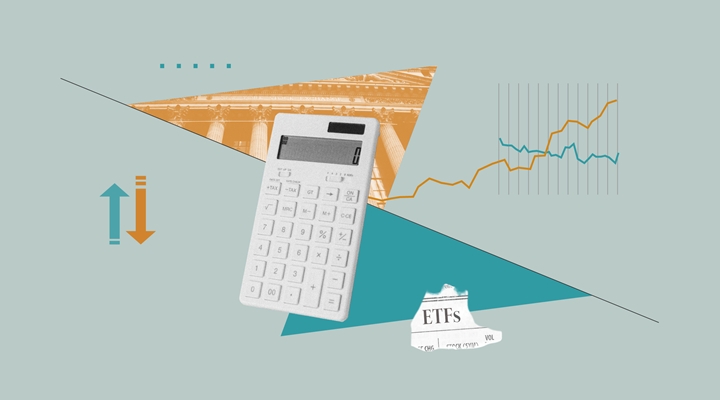2010 was an exciting year for exchange-traded product (ETP) investors. Transparency increased, on-exchange liquidity rose, and intensifying competition amongst providers was marked by a raft of newly launched “me-too” products sporting lower expense ratios than existing competitors. But perhaps one of the most interesting developments was the number of new products that opened up new opportunities for investors. One example is the iShares Markit iBoxx Euro High Yield (SHYG) ETP, launched in September, which gave investors access to high yield European corporate debt in an ETF wrapper for the first time. In total, there were 327 new ETPs launched across Europe in 2010, including 140 equity ETFs, 75 commodity ETPs and 31 fixed income ETFs. Despite the plethora of new ETPs launched in 2010, there are still niches to be filled by enterprising ETP providers. Here we highlight three ideas for new ETPs that we think could benefit investors in 2011 and beyond.
Leverage for Long-Term Investors
The problem with the current leveraged ETPs is that while they are useful for short-term traders, they are unsuitable for long-term investors because of the unfavourable effects of compounding daily leverage. In a volatile market, holding onto a two- or three-times leveraged (or inverse) fund for an extended period is almost certain to lead to an adverse investor experience, whether or not the investor in question guessed correctly on the subsequent direction of the market. But there are methods available to mitigate this problem.
Because leveraged ETPs use swaps to track the performance of their index, it is a fairly simple exercise to change the leverage time horizon from daily to monthly by changing the terms of the swap. While this would not completely eliminate the problems caused by compounding in a volatile market, it would drastically reduce them. This would especially be the case if the leverage was limited to 1.5 times instead of two or three times, as the drag of frequent compounding become more pronounced with increasing leverage.
A long-term leveraged ETP could prove popular because it can be difficult for investors to generate leverage on their own. It can be very expensive to borrow money from a brokerage through a margin account, while steep trading commissions and wide bid-ask spreads may make options too pricey. And the futures market is largely out of reach for many investors. It can also be a burden for investors to post margin and keep their debt level constant over time. By pooling the assets from multiple investors, an ETP would have the scale to offer steady long-term leverage at a reasonable fee.
Emerging Market Local Currency Bonds
While there are a few ETPs from iShares and db x-trackers which track the performance of emerging market sovereign debt indices, they are strictly limited to bonds issued in developed market currencies--the euro and the US dollar. Investors who measure their portfolio returns in pounds sterling or euros can potentially achieve greater returns if they own emerging market bonds issued in the local currencies, as the emerging market currencies could appreciate against investors’ home currency.
Despite the fact that emerging markets tend to have lower credit ratings than developed markets, you can make the case that the low debt levels of emerging markets make them less likely to default than many more indebted developed countries, since many of these countries are experiencing stronger economic growth and facing smaller fiscal deficits. Central banks within emerging markets have also been more focused on price stability, so there is also less risk that inflation will hamper returns than there has been in the past. Also, by owning these bonds in an ETP, investors are diversified against idiosyncratic currency, political and regulatory risk from any one country. There can also be diversification benefits from foreign currency exposure.
Judging by the success of local currency emerging market bond ETPs in the US, it would seem to be only a matter of time before similar ETPs emerge on this side of the Atlantic. The US ETP market currently has a pair of ETPs tracking emerging market local currency debt. Market Vectors Emerging Market Local Currency Bond ETP is a passive fund with more than USD 130 million in net assets, while WisdomTree Emerging Markets Local Debt is an active fund which has accumulated more than USD 470 million in assets since its launch in mid-2010.
Target-Maturity Fixed Income ETPs
Another potential niche to be filled by ETP providers is fixed income ETPs that target a specific maturity date. Many investors find it useful to own fixed income securities maturing on a particular date, whether to meet a specific liability or ensure a predictable income stream over time. These investors are typically limited to purchasing individual bonds, making diversification difficult due to the large size requirements for most bond purchases.
There is a potential alternative solution for these investors: target-maturity bond ETPs. These ETPs are comprised of or would otherwise track a collection of bonds that all mature in the same year or tight cluster of years. Once the target date is reached, the ETP would close and shareholders would receive their principal just as if they were holding individual bonds. Investors can hold these ETPs until maturity and be reasonably secure that they would receive the yield-to-maturity anticipated at time of purchase. The ETP would also likely have the added benefit of being more liquid than individual bonds.
US ETP providers have already jumped on this idea. iShares debuted a series of target-maturity municipal bond ETPs, with maturities ranging from 2012 to 2017 in the beginning of 2010, and Guggenheim’s BulletShares--a series of target-maturity corporate bond ETPs whose maturity dates range from 2011 to 2017--were launched later in the year.
While we can't predict if ETP providers will fill these niches this year, we can say with some certainty that they will introduce a number of new products throughout the course of 2011. Many are likely to be 'me-too' products which won't offer much to most investors, but the occasional gem will open up a new market niche previously inaccessible through an ETP wrapper. Areas of interest will likely include active fixed income products, and emerging markets. 2011 is shaping up to be another exciting year for ETP investors.
























